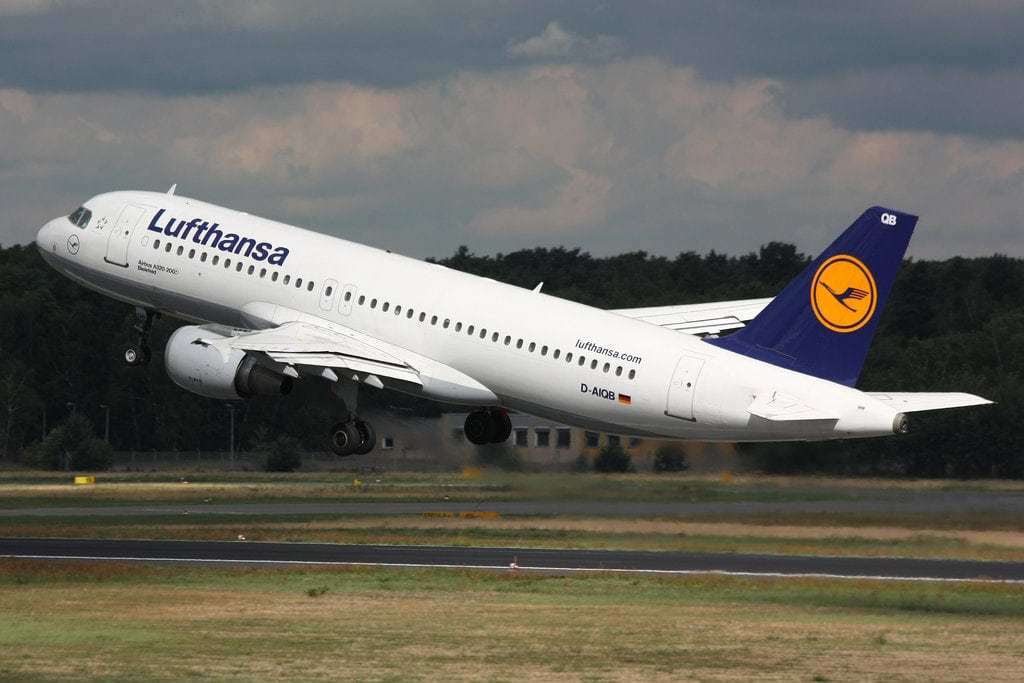2Q18 Yields Strong Aviation Performance from Inmarsat

A Lufthansa A320 taking off. Lufthansa soft-launched Inmarsat GX Aviation’s IFC. Photo: Wikimedia Commons
Inmarsat produced a better-than-expected set of results, which saw a particularly strong performance in the aviation market. The operator announced that overall revenue for the six months to the end of June reached $717.2 million, an increase of 4.9 percent and $33.5 million compared to the same stage last year. However, it was the aviation figure that was the standout in the latest set of figures. For the six months to the end of June, Inmarsat’s revenues in aviation reached $115.5 million, an increase of almost 39 percent compared to the same stage last year. Considering that most of Inmarsat’s other business segments showed minimal growth, the aviation figure stood out more.
“A good set of Second Quarter 2018 (2Q18) results (even after one-offs) and the guidance reiteration should support Inmarsat’s recent re-rating,” said Jeffries Satellite Equity Analyst Giles Thorne in a research note. “We don’t expect consensus to be moved by the guidance reiteration. On the two touch points for sentiment: low-end maritime competition will remain a focus; Aviation Earnings Before Interest, Taxes, Depreciation, and Amortization (EBITDA) is tracking well. Welcome progress in the right direction.”
Deutsche Bank Satellite Equity Analyst Roshan Ranjit also put out a research note on Inmarsat’s results. “Inmarsat has announced a strong EBITDA result, c7 percent ahead of company compiled consensus given a strong Government and Aviation result. Group revenues c3 percent ahead of consensus and Deutsche Bank estimates (Gov driven), c1 percent ahead U/L. Within the mix maritime, revenues were 1 percent below consensus (+0.1 percent year-on-year, Q1 +1.6 percent) and 1.6 percent below our top end of range f/c, good Foreign Exchange Market (FX) upselling with 862 adds vs. 645 in Q1 – albeit pricing incentives continue impacting maritime revenues,” he said.
Thorne was also positive about Inmarsat’s performance in aviation. He added, “Aviation tracking well: Revenue was exactly in-line with consensus but EBITDA +7.3 percent ahead, the second quarter of out-performance on this key touch-point for the equity (+44.8 percent on EBITDA in 1Q18). The Year-to-Date (YTD) margin (52 percent) is tracking far ahead of guidance (around 40 percent), indeed the Chief Financial Officer (CFO) has now said that the Financial Year (FY) outturn margin should “definitely begin with a 4” (underpinning consensus at 42 percent). Again, critical to sentiment will be news that airtime revenue from GX Aviation In-Flight Connectivity (IFC) has started to flow (only $1.4 million in 2Q18, from 50 Qatar Air and New Zealand Air aircraft — Lufthansa still only soft-launched).
When Via Satellite spoke to Inmarsat Chief Executive Officer (CEO) Rupert Pearce late last year, he was optimistic about the potential size of the aviation market for Inmarsat. “From this diversified position, we can achieve many more shots on goal than we did a decade ago, and aviation passenger connectivity is a classic example of that. It could be a billion-dollar revenue stream for us in a decade or more, if we are successful, and if the market grows the way commentators think it will do,” he said.